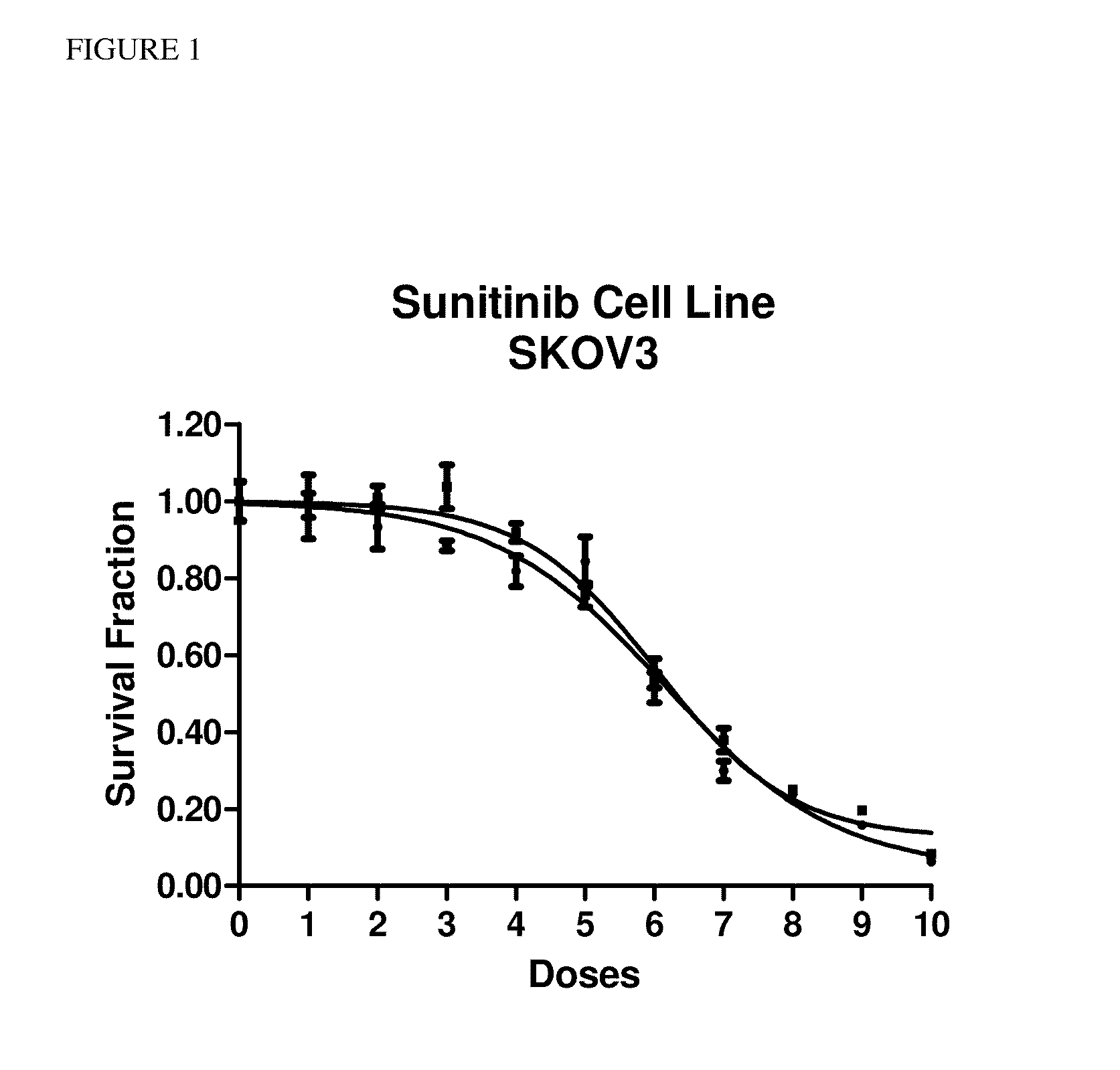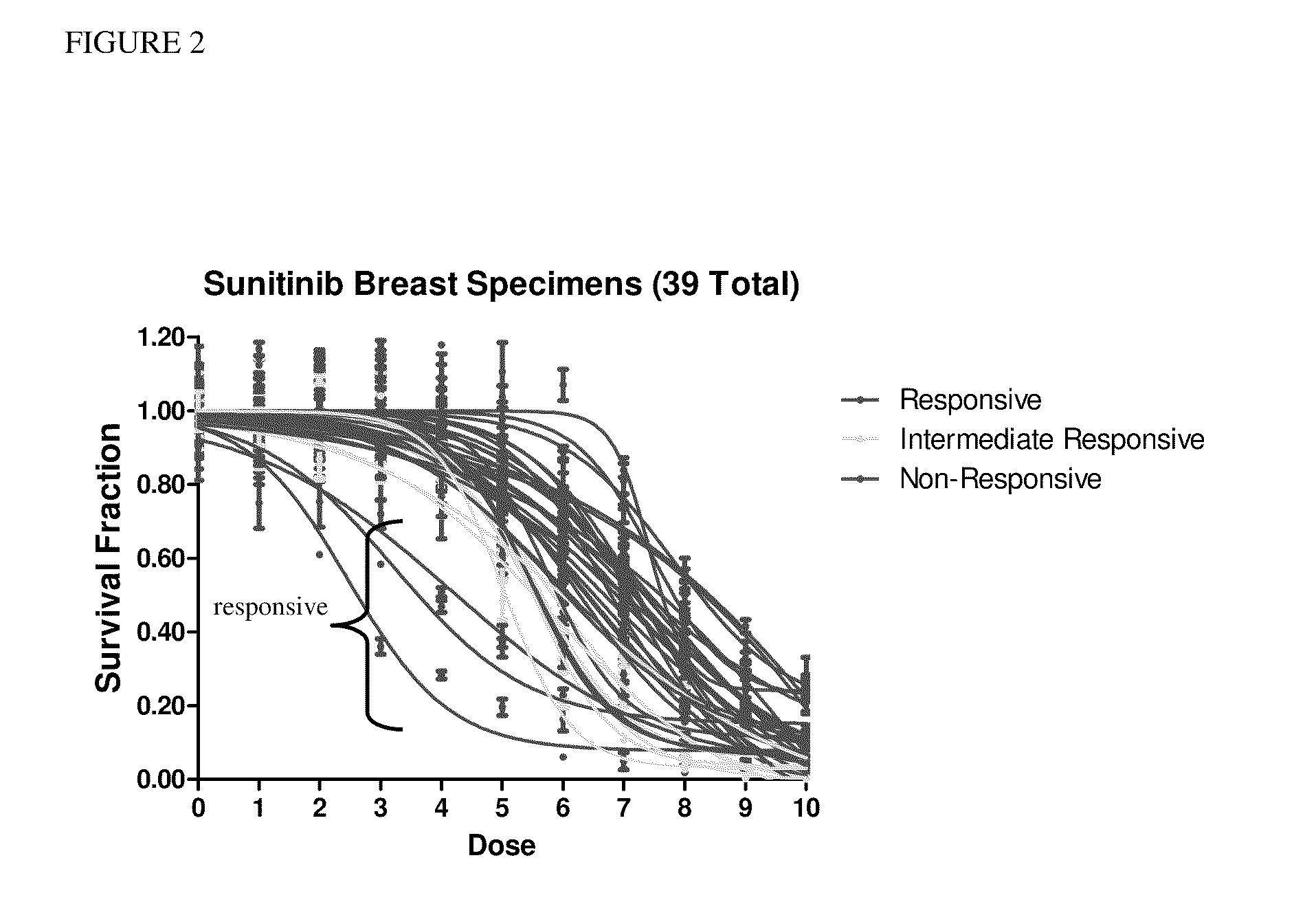Methods for predicting a cancer patient's response to sunitinib
a cancer patient and cancer technology, applied in the field of individualization of cancer treatment, can solve the problems of not being able to produce reliable results for all chemotherapeutic agents, mtt assay and differential staining cytotoxicity (disc) assay, etc., and achieve the effect of avoiding unnecessary treatmen
- Summary
- Abstract
- Description
- Claims
- Application Information
AI Technical Summary
Benefits of technology
Problems solved by technology
Method used
Image
Examples
examples
[0035]In order to characterize the performance of sunitinib in vitro, initial development was performed using the immortalized ovarian carcinoma cell line SKOV3. FIG. 1 shows a dose response curve for the SKOV3 cell line (ovarian carcinoma cell line) to sunitinib exposure in vitro, over a range of sunitinib doses shown in Table 1. The cell line SKOV3 was found to exhibit a consistent response to sunitinib.
TABLE 1DoseTesting Concentration1055.3μM927.6μM813.8μM76.91μM63.46μM51.73μM40.864μM30.432μM20.216μM10.108μM
[0036]After assay development, thirty-nine primary breast carcinoma cultures were treated with sunitinib at the doses shown in Table 1.
[0037]All specimens treated with the drug were confirmed to contain a majority of epithelial cells (>65%) via immunocytochemistry. A 10-dose range of drug concentrations was used to treat the cell line and breast specimens for 72 hours. After treatment, the cultures were fixed with ethanol, and stained with DAPI. Any cells remaining adherent af...
PUM
| Property | Measurement | Unit |
|---|---|---|
| Time | aaaaa | aaaaa |
| Molar density | aaaaa | aaaaa |
| Molar density | aaaaa | aaaaa |
Abstract
Description
Claims
Application Information
 Login to View More
Login to View More - R&D
- Intellectual Property
- Life Sciences
- Materials
- Tech Scout
- Unparalleled Data Quality
- Higher Quality Content
- 60% Fewer Hallucinations
Browse by: Latest US Patents, China's latest patents, Technical Efficacy Thesaurus, Application Domain, Technology Topic, Popular Technical Reports.
© 2025 PatSnap. All rights reserved.Legal|Privacy policy|Modern Slavery Act Transparency Statement|Sitemap|About US| Contact US: help@patsnap.com


